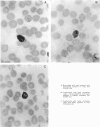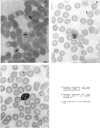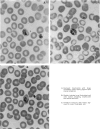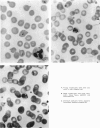Abstract
Four cases of Plasmodium ovale malaria are reported among US servicemen stationed in Viet-Nam between January 1966 and March 1969. Taken together with other cases cited by the authors, these provide strong evidence of the existence (sometimes disputed) of this Plasmodium in continental South-East Asia.
None of the men had served in any other area of endemic malaria and their travel and medical histories suggest that all 4 infections were acquired by mosquito transmission. They constitute only 0.066% of the 6036 malaria cases reported among servicemen returning from Viet-Nam during this period and represent only 0.11% of the blood films from 3686 individuals examined at the US National Malaria Repository during the same period.
Serological testing for malaria antibodies with the indirect fluorescent technique corroborated the diagnosis of P. ovale in 1 case. Speciation was not possible in the other 3 cases since titres to P. vivax and P. ovale antigens were identical. Only 1 of the patients reported previous experience with vivax malaria.
Most of the parasites seen in thin blood films were developing trophozoites and immature schizonts; ring forms and gametocytes were rare; mature schizonts were not found. The morphology of the parasites was typical of P. ovale, with more than 50% of the infected cells showing fimbriations, an oval shape or both.
Full text
PDF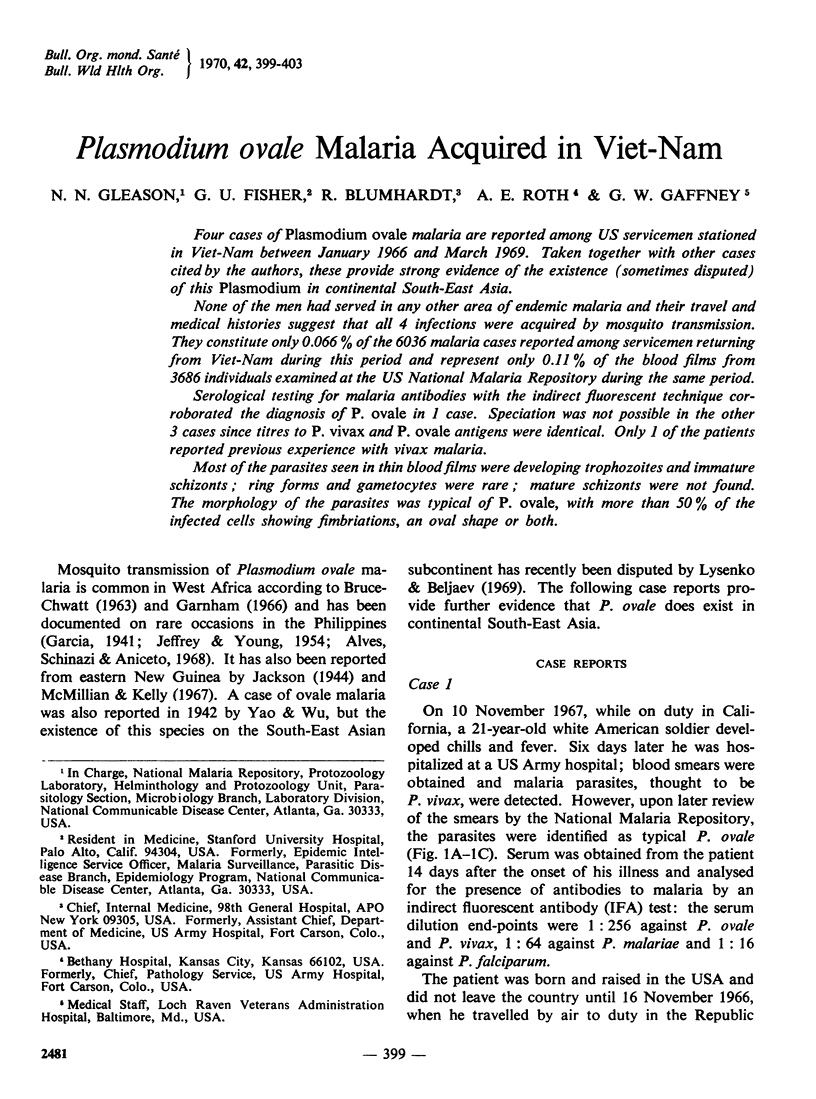
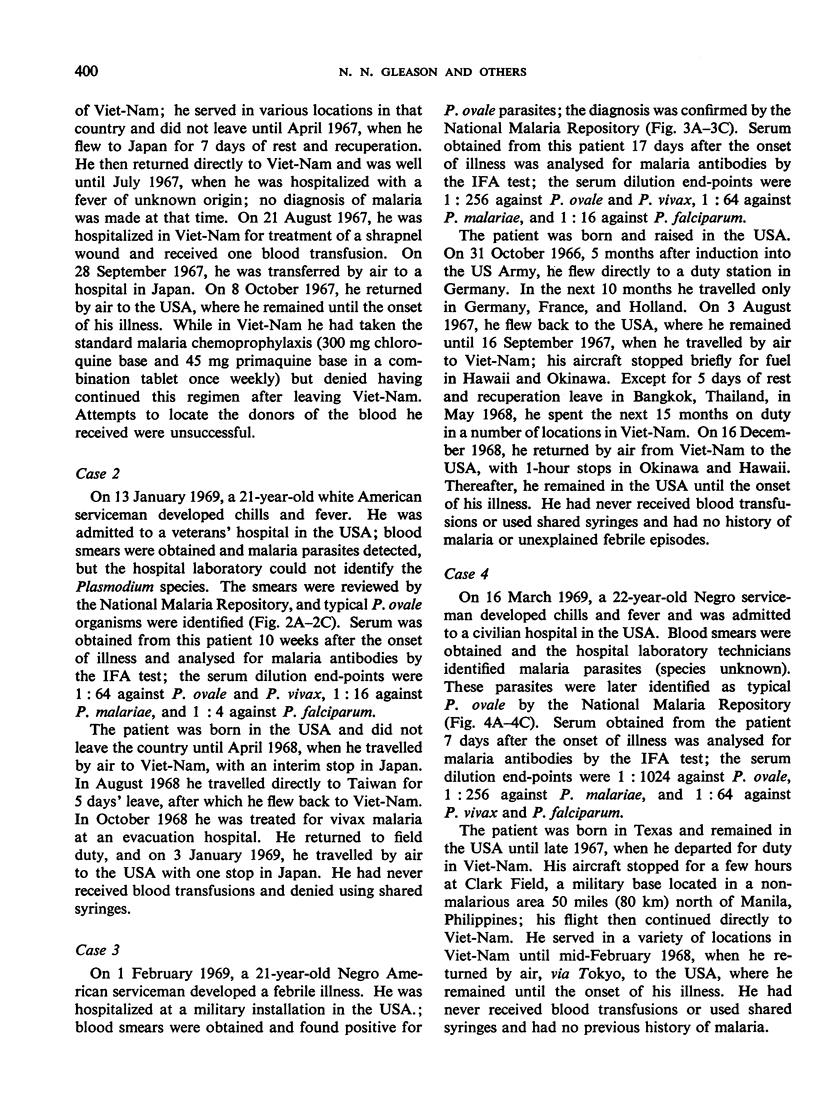
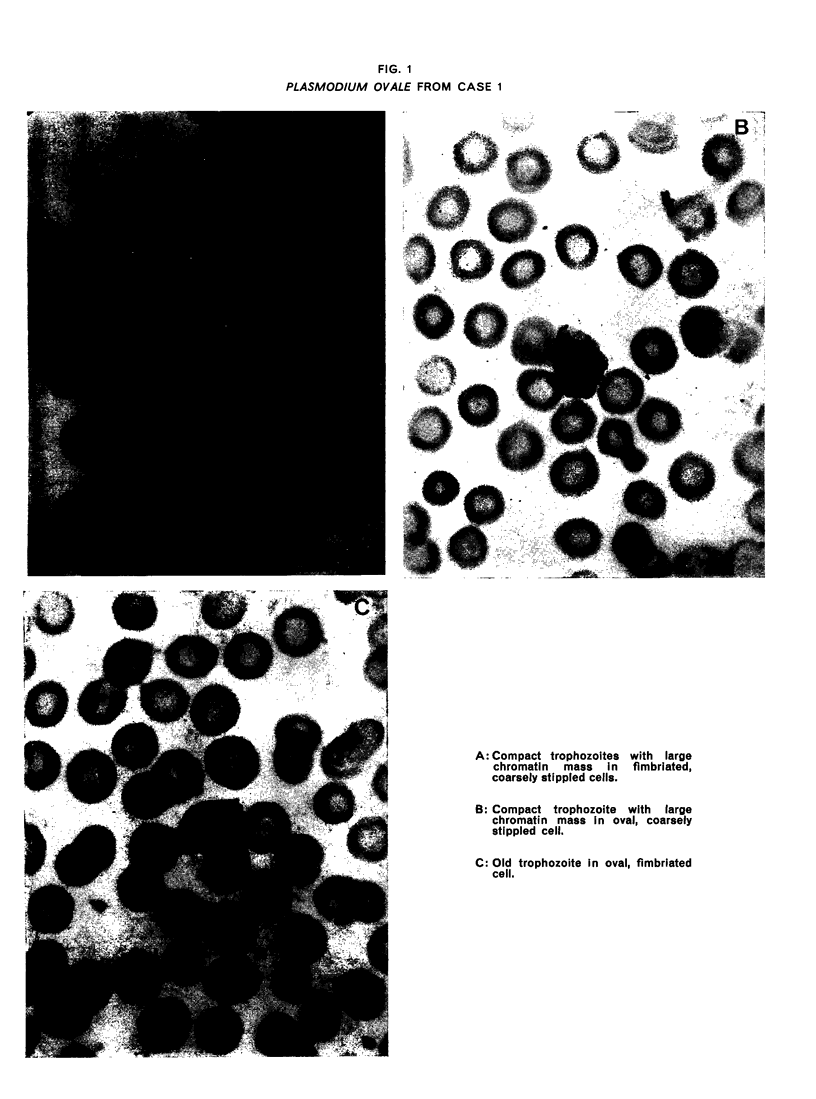
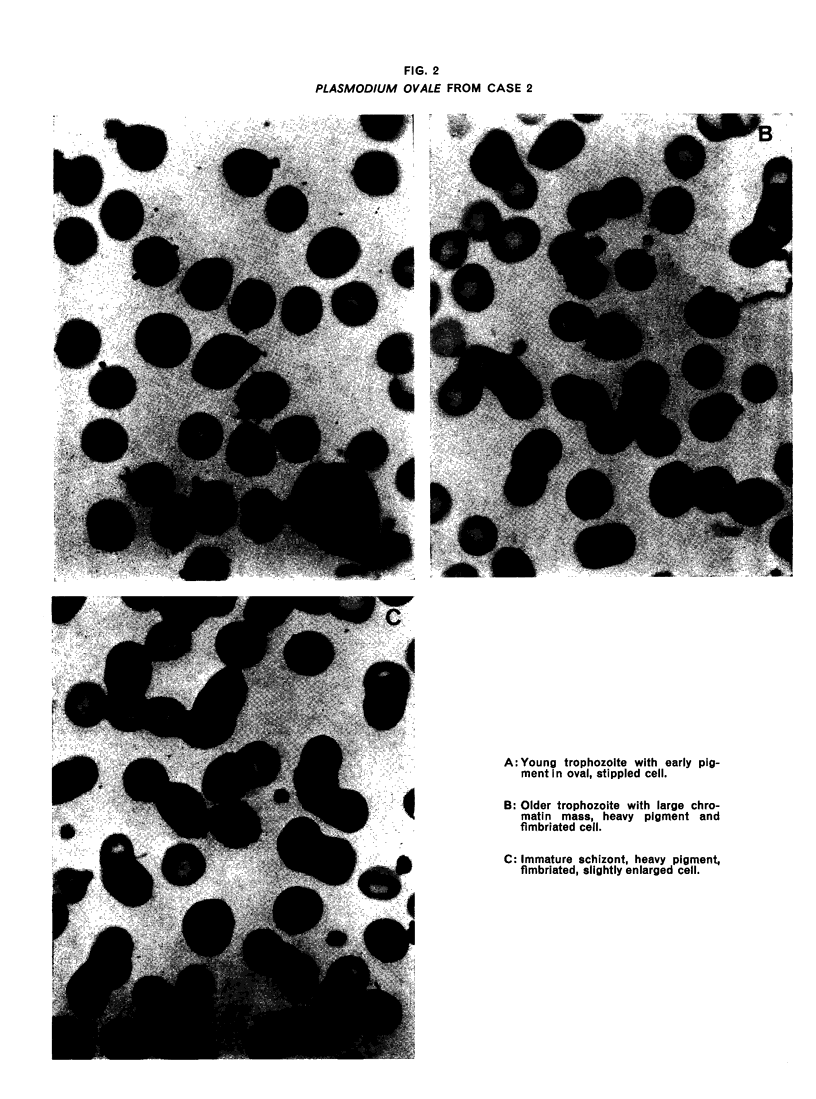
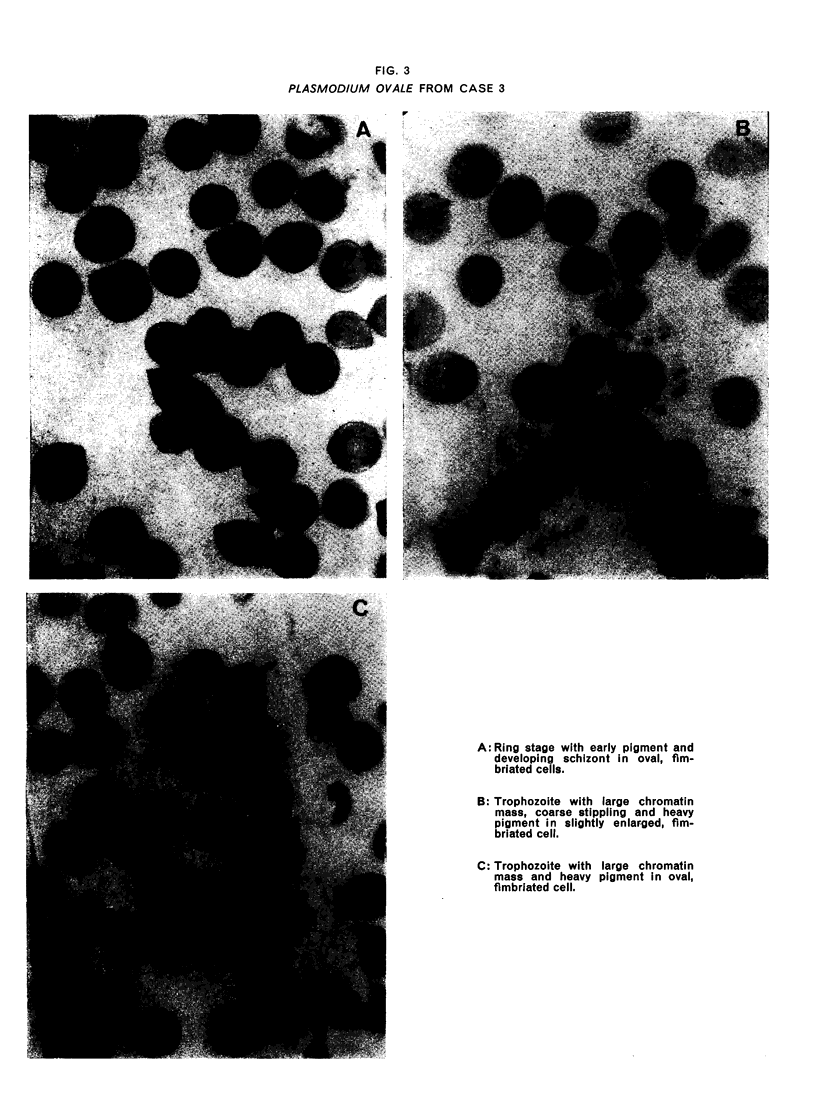
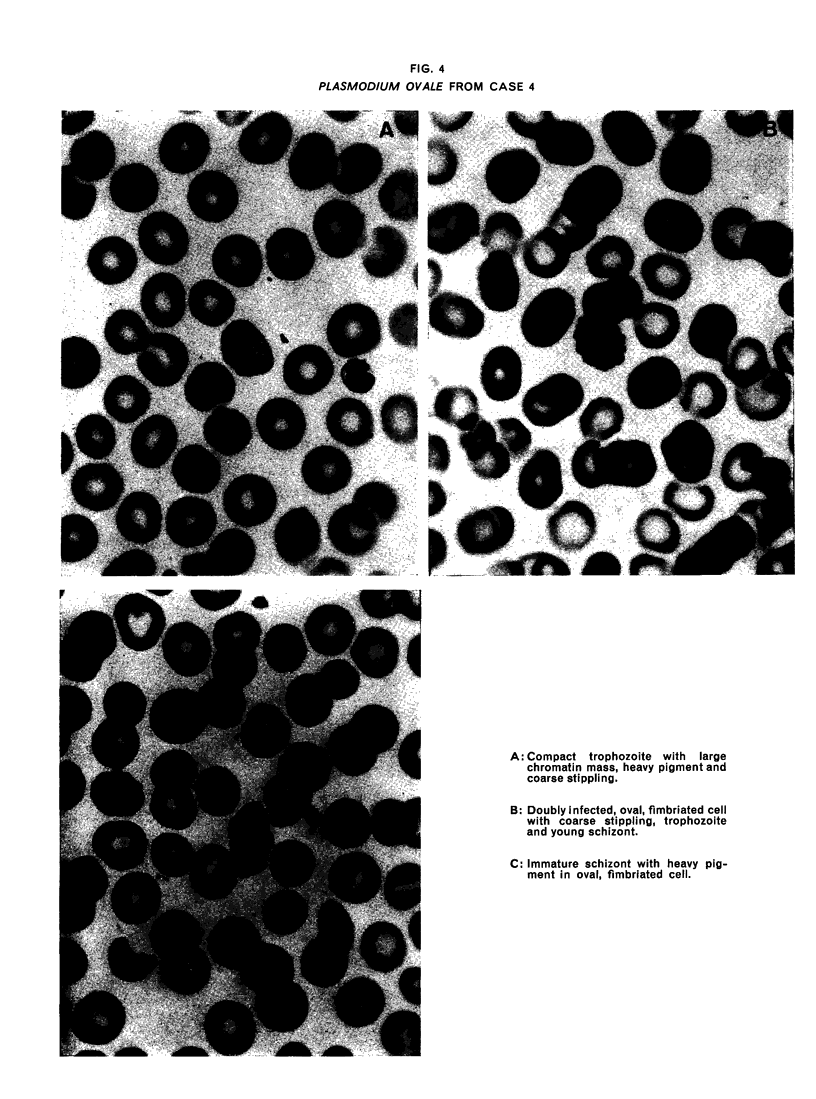
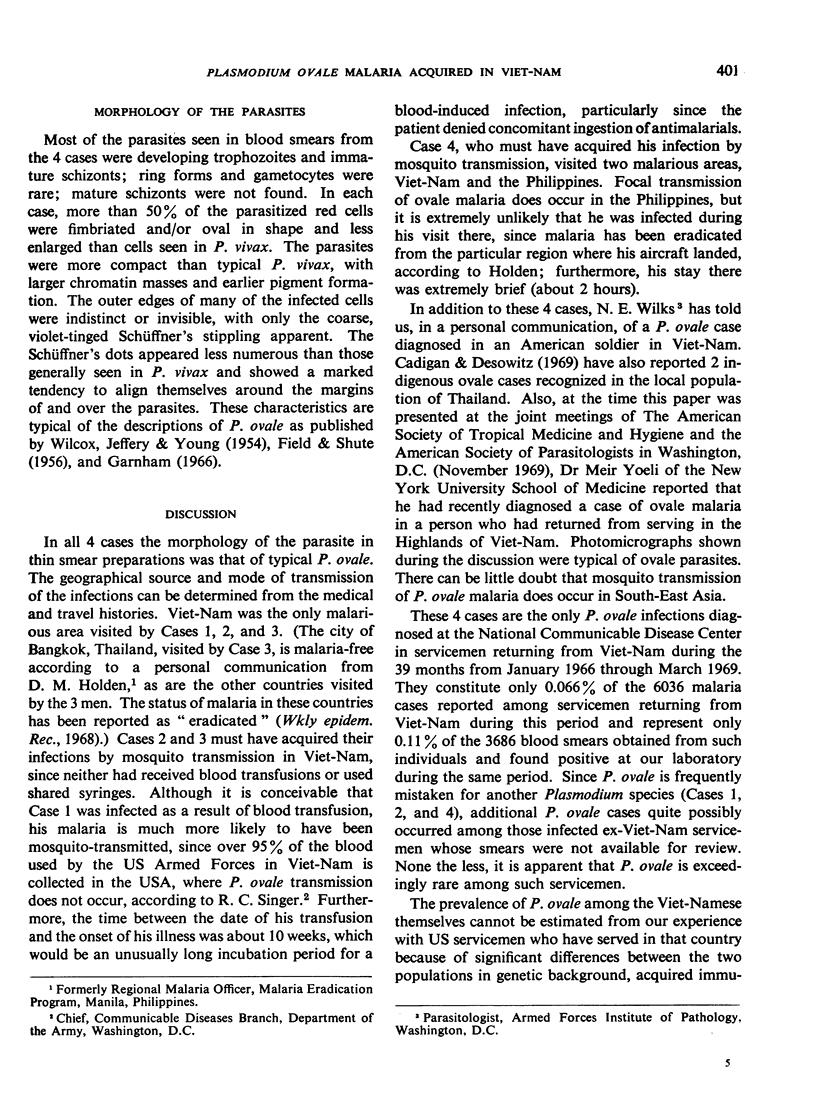
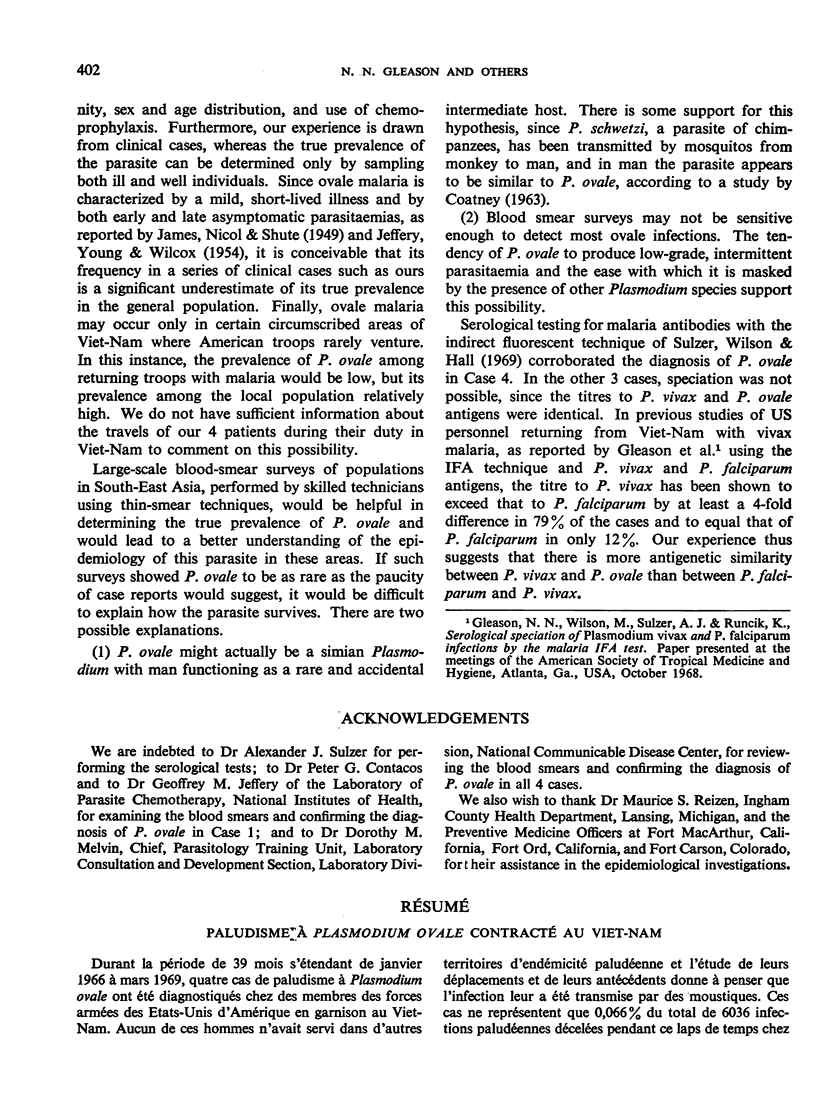
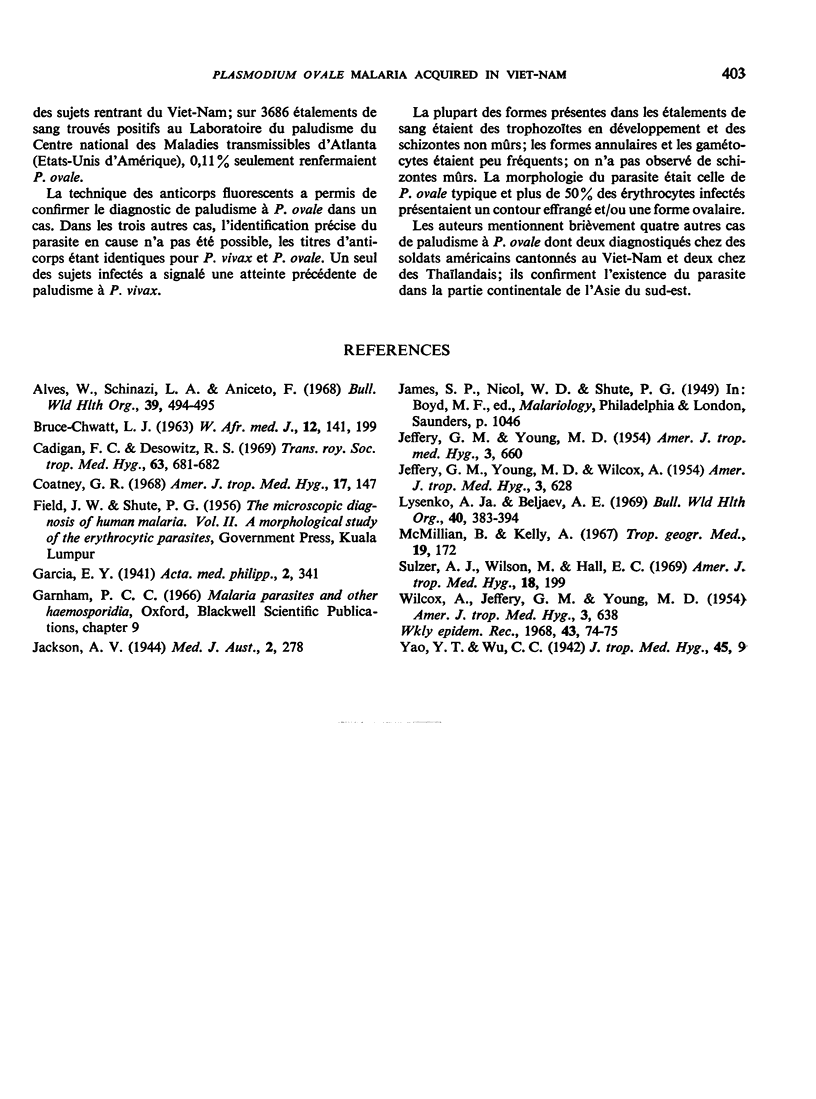
Images in this article
Selected References
These references are in PubMed. This may not be the complete list of references from this article.
- Alves W., Schinazi L. A., Aniceto F. Plasmodium ovale infections in the Philippines. Bull World Health Organ. 1968;39(3):494–495. [PMC free article] [PubMed] [Google Scholar]
- BRUCE-CHWATT L. J. A LONGITUDINAL LONGITUDINAL SURVEY OF NATURAL MALARIA INFECTION IN A GROUP OF WEST AFRICAN ADULTS. I. West Afr Med J. 1963 Aug;12:141–173. [PubMed] [Google Scholar]
- Cadigan F. C., Desowitz R. S. Two cases of Plasmodium ovale malaria from central Thailand. Trans R Soc Trop Med Hyg. 1969;63(5):681–682. doi: 10.1016/0035-9203(69)90194-1. [DOI] [PubMed] [Google Scholar]
- Coatney G. R. Simian malarias in man: facts, implications, and predictions. Am J Trop Med Hyg. 1968 Mar;17(2):147–155. doi: 10.4269/ajtmh.1968.17.147. [DOI] [PubMed] [Google Scholar]
- JEFFERY G. M., YOUNG M. D. The Donaldson strain of malaria. 4. An evaluation and status. Am J Trop Med Hyg. 1954 Jul;3(4):660–664. doi: 10.4269/ajtmh.1954.3.660. [DOI] [PubMed] [Google Scholar]
- JEFFERY G. M., YOUNG M. D., WILCOX A. The Donaldson strain of malaria. 1. History and characteristics of the infection in man. Am J Trop Med Hyg. 1954 Jul;3(4):628–637. doi: 10.4269/ajtmh.1954.3.628. [DOI] [PubMed] [Google Scholar]
- Lysenko A. J., Beljaev A. E. An analysis of the geographical distribution of Plasmodium ovale. Bull World Health Organ. 1969;40(3):383–394. [PMC free article] [PubMed] [Google Scholar]
- McMillan B., Kelly A. Ovale malaria in eastern New Guinea. Trop Geogr Med. 1967 Sep;19(3):172–176. [PubMed] [Google Scholar]
- Sulzer A. J., Wilson M., Hall E. C. Indirect fluorescent-antibody tests for parasitic diseases. V. An evaluation of a thick-smear antigen in the IFA test for malaria antibodies. Am J Trop Med Hyg. 1969 Mar;18(2):199–205. [PubMed] [Google Scholar]
- WILCOX A., JEFFERY G. M., YOUNG M. D. The Donaldson strain of malaria. 2. Morphology of the erythrocytic parasites. Am J Trop Med Hyg. 1954 Jul;3(4):638–650. doi: 10.4269/ajtmh.1954.3.638. [DOI] [PubMed] [Google Scholar]



